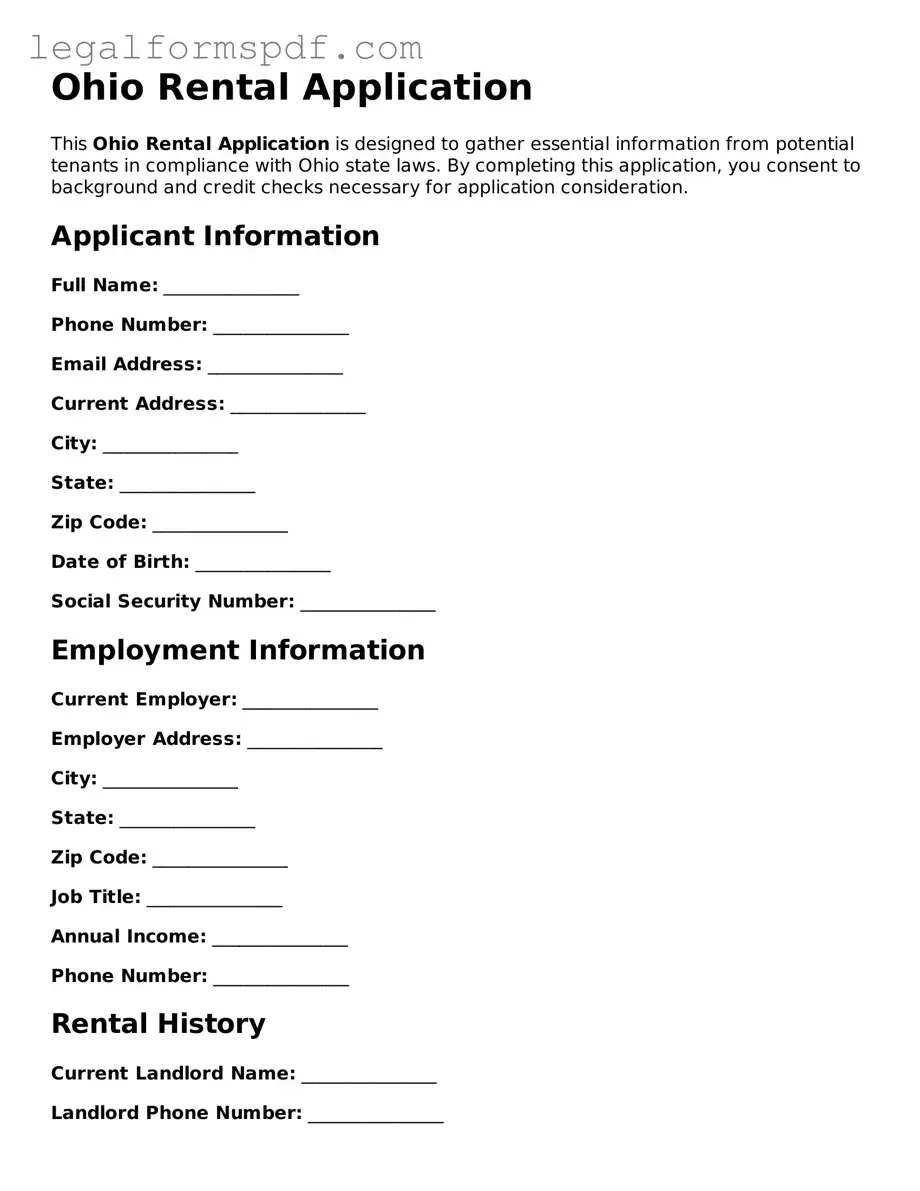Ohio Rental Application
This Ohio Rental Application is designed to gather essential information from potential tenants in compliance with Ohio state laws. By completing this application, you consent to background and credit checks necessary for application consideration.
Applicant Information
Full Name: _______________
Phone Number: _______________
Email Address: _______________
Current Address: _______________
City: _______________
State: _______________
Zip Code: _______________
Date of Birth: _______________
Social Security Number: _______________
Employment Information
Current Employer: _______________
Employer Address: _______________
City: _______________
State: _______________
Zip Code: _______________
Job Title: _______________
Annual Income: _______________
Phone Number: _______________
Rental History
Current Landlord Name: _______________
Landlord Phone Number: _______________
Current Rent Amount: _______________
Address of Current Rental: _______________
City: _______________
State: _______________
Zip Code: _______________
Reason for Leaving: _______________
References
- Name: _______________ Relationship: _______________ Phone Number: _______________
- Name: _______________ Relationship: _______________ Phone Number: _______________
- Name: _______________ Relationship: _______________ Phone Number: _______________
Additional Information
Do you have pets? Yes ___ No ___ If yes, please describe: _______________
Will you have any roommates? Yes ___ No ___ If yes, how many?: _______________
Proposed Move-In Date: _______________
Vehicle Make/Model: _______________ License Plate Number: _______________
Consent and Signature
I, _______________ (applicant's name), hereby give my consent for all necessary credit and background checks. I affirm that all the information provided on this application is true and complete to the best of my knowledge.
Applicant Signature: _______________ Date: _______________
By signing this application, the applicant acknowledges the potential use of Ohio Fair Credit Reporting Act compliant services for the purposes of background checking.
